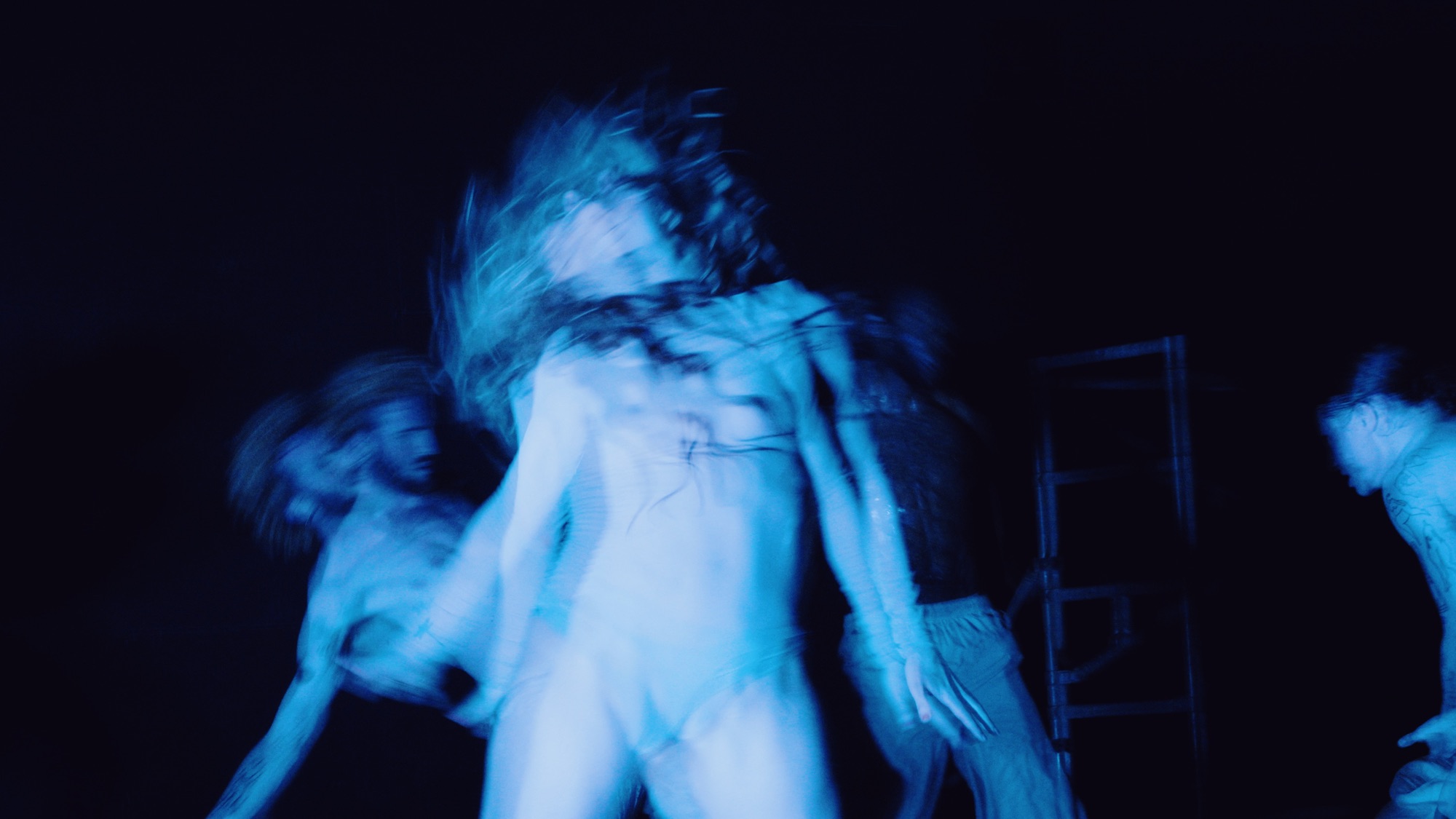Words by Josephine Leask.
The huge, open stage littered with stark utilitarian objects, scaffolding frames, industrial waste bags, a ball of burnt litter swinging from the ceiling like a ghoulish pinata, a dishevelled plastic curtain, a platform made of old speakers – looks like an abandoned building site. It conjures something worse: land that has been loved, seized, occupied then discarded. While the scenography in Andrea Peña’s BOGOTÁ conceptualised by herself and Jonathan Saucier depicts a harsh environment, the aural landscape of cicadas and exotic birdsong brings both light and warmth. The inspiration for Columbian/Canadian choreographer Peña’s uncompromisingly intense work is Columbia’s high-altitude capital city, Bogotá, its rich yet turbulent histories and modern transformations.
A voice-over pays tribute to Peña’s indigenous ancestors, the Muisca, who settled in Bogotá prior to its colonisation by the Spanish conquistadors in 1538. Bodies emerge from the shadows and slowly reclaim the site, inhabiting the industrial objects and creating their own physical architecture as they crawl, climb and mould themselves into the giant refuge sacks or metal frames. Partially naked, these transgressive, fluid, sensuous, oozing bodies, contrast with the contained, austere setting and breathe life into the hostile atmosphere. Throughout the performance the interaction between dancers and objects, fleshy bodies with non-human matter, defines what is significant about BOGOTÁ.
Some of the dancers drag their partners across the stage or cradle them, others perform anguished solos, but all soon come together in a collective struggle. They connect intimately with each other, suggesting a kinship that blurs the boundaries between mutual support, unity, desire and eroticism. The voice-over summons their ancestors from pre-colonial times to inhabit these contemporary deviant bodies and restore love, kindness, healing and spirituality. Peña and her artists’ vision craft a new identity for the future Bogotá in the radical, queer, post-colonial body.
Peña weaves themes of queer resistance with mythology, magic realism and Bogota’s political and spiritual heritage in a journey to honour her forebears. What unfolds are embodied stories and rituals enacted by the performers in visceral, repetitive cycles of struggle, death and re-birth, chaos and order. The nine dancers appear their strongest and most terrifying when moving in unison – activists and agitators taught, tense and sweating, rebellious and fierce figures huddled together, at times shouting, their faces distorted in pain and defiance. In another moment one dancer angrily demolishes the swinging ball of rubbish with a long pole. Moving between extreme physical states of tension and hard-core physical labour to moments of quiet and stillness, the performers are gripping if exhausting to watch, all of them endurance athletes who appear unfazed by the challenging choreography and the 1hr 20-minute duration of the show.
At one point, offering a break from the surges of motion and sound, Peña walks calmly onstage through the auditorium and clears up the litter, left by the trashed and broken ball of rubbish, with a Colombian flag. This interjection of herself into the work to perform this task feels like a metaphor for her relationship with the histories and futures of Bogotá. Maybe a reconciliation.
Enveloping the bodies and scenography, Debbie Doe’s textured electronic sound composition which includes rave beats, Columbia’s national anthem and messianic choral work, is ominous, cool, brooding and rousing; an expansive wall of loud sound that is just as mesmerising as the action on stage. It seems fitting to leave the theatre and walk outside into a mini hurricane.
